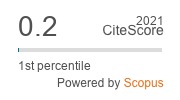Machine Learning Approaches to Real-Time Quality Control in Automotive Assembly Lines
Abstract
Autonomous Deep Quality Monitoring in Streaming Environments Monitoring plays a vital role in today's manufacturing industries due to its positive contribution toward the increase of productivity, safety of manufacturing operations, and reduction of manpower. It maximizes the lifespan of equipment, avoiding unnecessary downtime and ensuring the quality of the end product. Real-time quality monitoring is highly demanded because the common practice in the industry is deemed too labor-intensive as a result of multi-staged visual inspection. Accurate quality monitoring is important to attain high customer satisfaction and to meet the product's standard. Manual quality checks are limited in capacity, requiring time-intensive efforts, which increases costs for companies significantly. This has led to an in-depth study in utilizing data-driven approaches to fully automate quality monitoring of manufacturing products. Data-driven quality monitoring is developed through two steps, indirect sensing and monitoring, which circumvents high development time as is the case for analytical models. The models are capable of diagnosing possible defects of end products without manual intervention. Various approaches have been presented to deliver a reliable data-driven quality monitoring approach. Who supervises the supervisor? Model monitoring in production using deep feature embeddings with applications to workpiece inspection The automation of condition monitoring and workpiece inspection plays an essential role in maintaining high quality and throughput of the manufacturing process. The recent rise of developments in machine learning has led to vast improvements in autonomous process supervision. One of the main challenges is the monitoring of live deployments of these machine learning systems and raising alerts when encountering events that might impact model performance. Supervised classifiers are typically built under the assumption of stationarity in the underlying data distribution. A visual inspection system trained on material surface defects does not adapt or recognize gradual changes in the data distribution, known as 'data drift'. It is desirable to provide real-time tracking of a classifier’s performance to inform about the onset of additional error classes and the necessity for manual intervention with respect to classifier re-training. Today's increased level of automation in manufacturing requires the automation of material quality inspection with minimal human intervention. Companies strive to achieve both quantity and quality in production without compromising one over the other. With advancements in Artificial Intelligence, companies employ such technologies to automate quality inspection and monitor machine conditions, thereby minimizing human intervention and optimizing factory capacities. One such event may be a gradual or abrupt drift in the data distribution.




